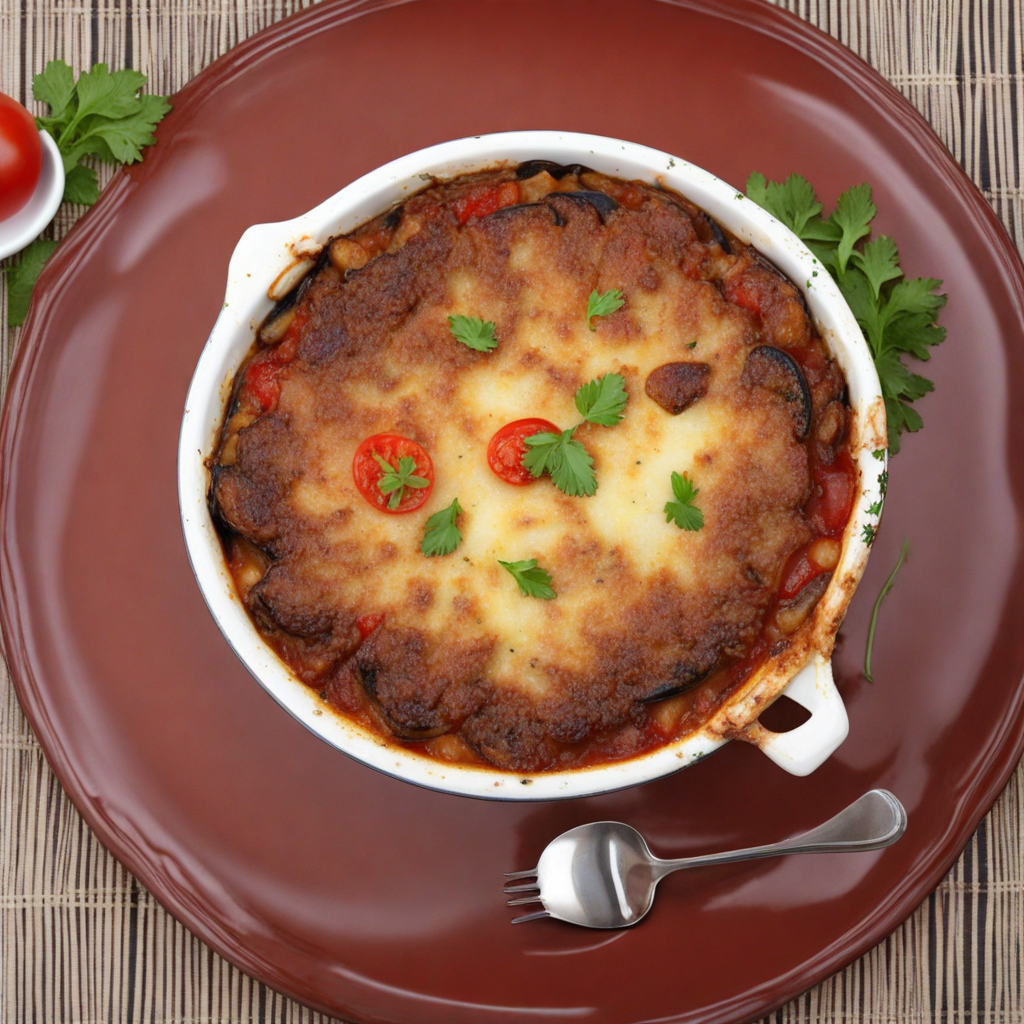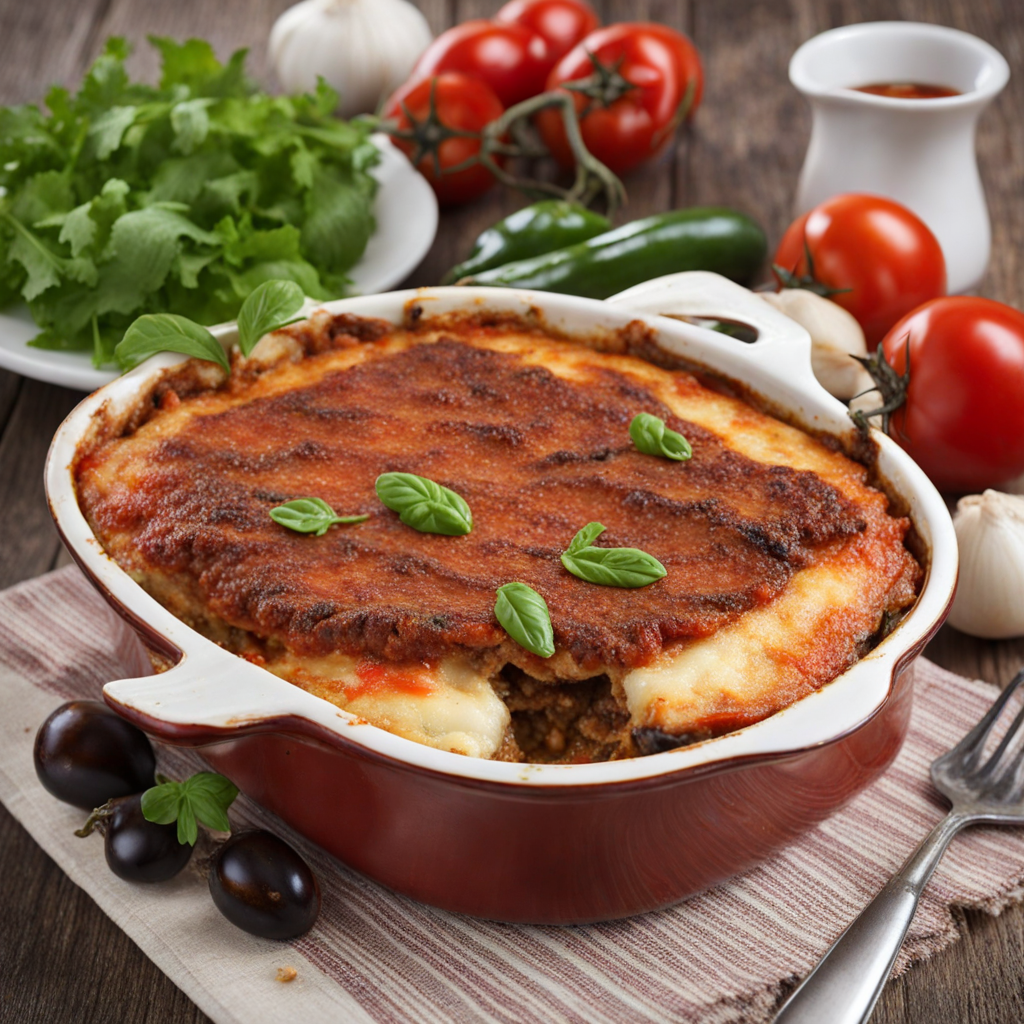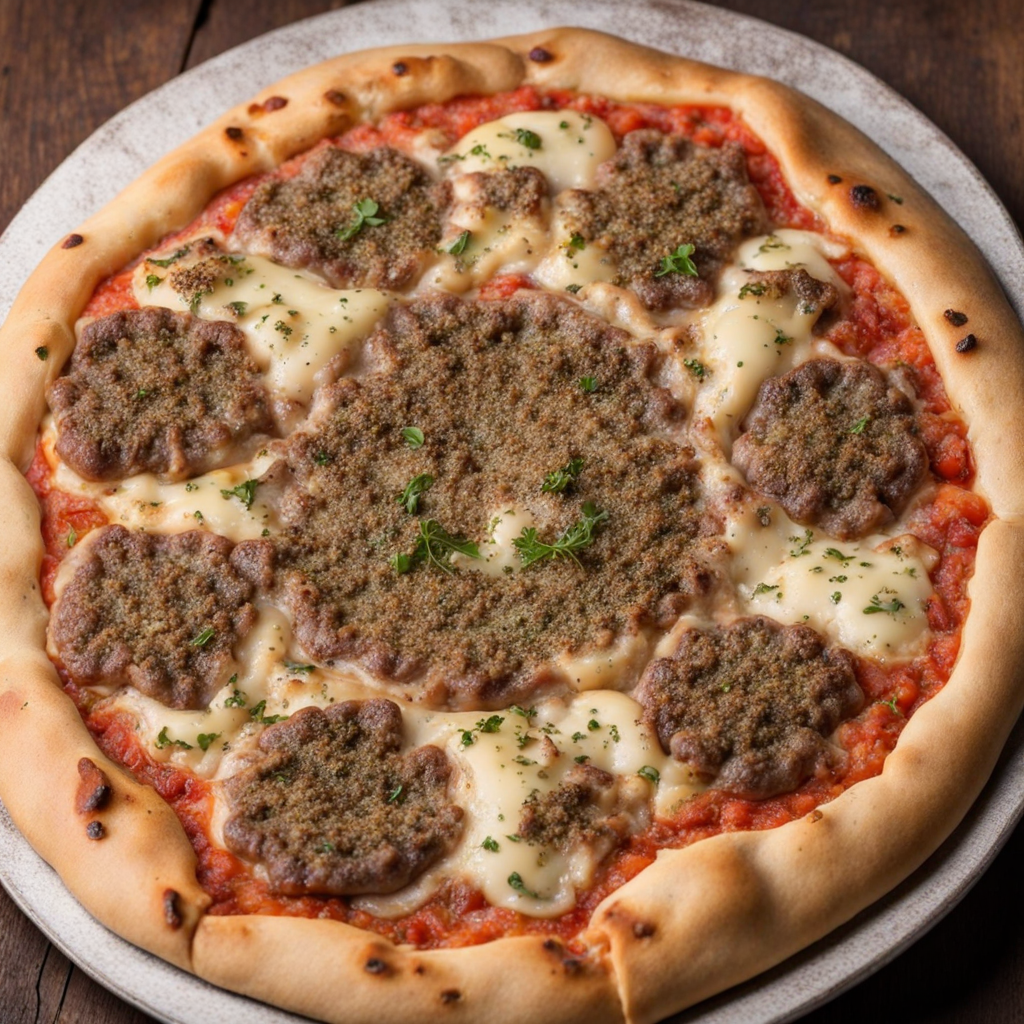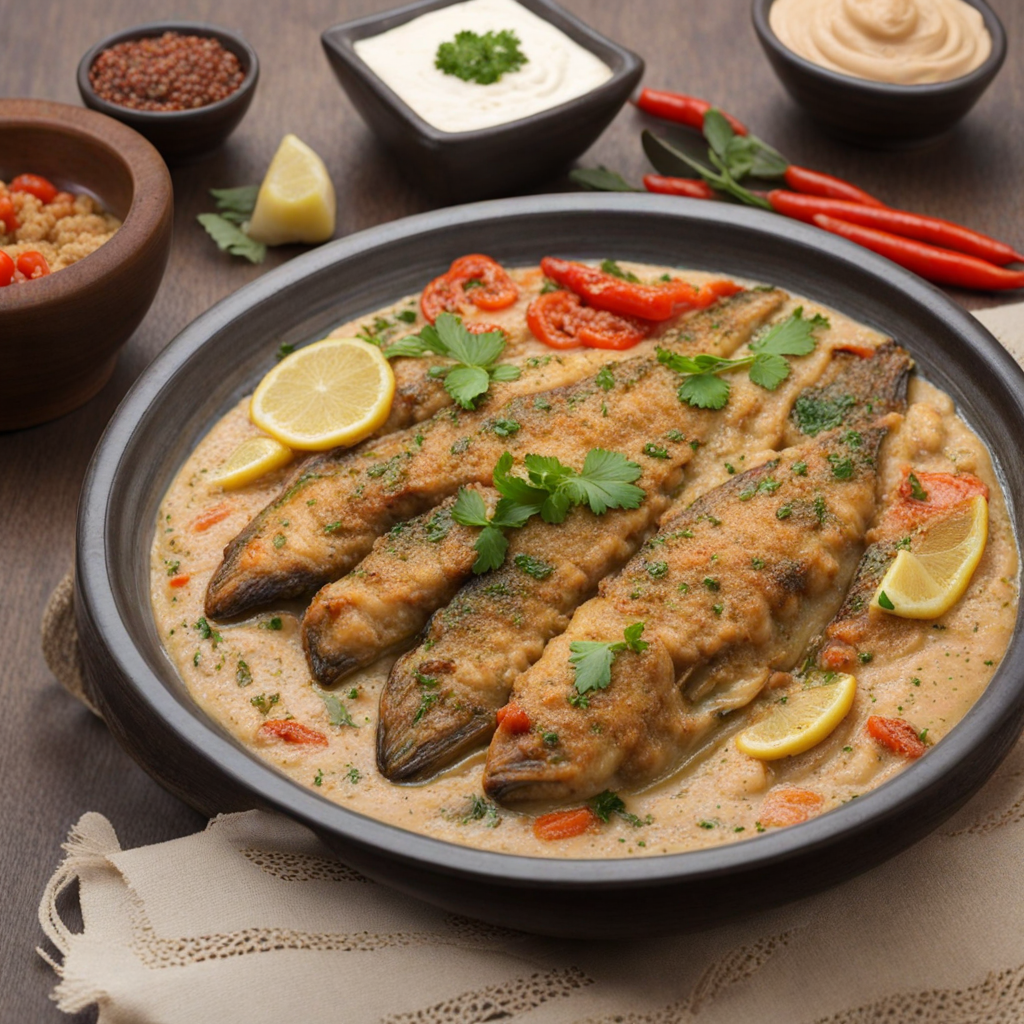Moussaka
Moussaka is a delightful dish that showcases the rich culinary traditions of Lebanon, blending layers of flavor and texture in a harmonious way. At its core, moussaka features tender eggplant, which is typically sliced and either grilled or baked to perfection, allowing it to absorb the surrounding flavors while maintaining a soft, velvety texture. The eggplant is complemented by a savory mix of spiced ground meat, often lamb or beef, which is sautéed with onions, garlic, and a medley of aromatic spices such as cinnamon, allspice, and nutmeg, creating a warm, comforting filling that tantalizes the taste buds. One of the standout elements of Lebanese moussaka is its rich tomato sauce, which adds acidity and depth to the dish. The sauce is often made from ripe tomatoes, simmered with additional spices and sometimes a hint of sweetness, which balances the savory meat and smoky eggplant. Layered together, these ingredients create a visually stunning presentation, with the vibrant colors of the eggplant and sauce contrasting beautifully against the warm, hearty filling. The dish is then baked until bubbly and golden, allowing the flavors to meld together in a symphony of taste. To finish, moussaka is typically topped with a luscious béchamel sauce, made from milk, butter, and flour, which adds a creamy richness to each bite. This final layer creates a decadent finish that elevates the entire dish, making it a perfect centerpiece for family gatherings or festive occasions. Served warm, moussaka is often accompanied by a side of fresh salad or crusty bread, making it a satisfying meal that is sure to delight anyone looking to explore the exquisite flavors of Lebanese cuisine.
How It Became This Dish
Origin of مسقعة مسقعة, or "Maqlooba," is a beloved dish in Lebanon and across the Levant, characterized by its rich, layered flavors and hearty ingredients. The word "مقلبة" translates to "upside down," which reflects the traditional method of cooking the dish. The origins of مسقعة are often traced back to the agricultural practices of the region, where staple ingredients such as eggplant, rice, and various meats were readily available. Historically, the dish is thought to have roots in the ancient civilizations of the Levant, where various cultures exchanged culinary practices. The use of eggplant, for instance, is believed to have been introduced to the region through trade routes connecting Asia and the Mediterranean. The dish has evolved over centuries, influenced by the Ottoman Empire and later by French colonialism, which introduced new cooking techniques and flavors to Lebanese cuisine. \n\n Cultural Significance In Lebanon, مسقعة is more than just a dish; it is a symbol of hospitality and familial bonding. Often served during special occasions, family gatherings, and celebrations, it brings people together around the table. The communal aspect of eating مسقعة is significant; it is typically cooked in large pots, allowing everyone to share and partake in the meal. The preparation of the dish can be a family affair, where different generations come together to contribute their expertise, passing down traditional methods and recipes. Moreover, مسقعة reflects the diversity of Lebanese cuisine, showcasing the blend of flavors and ingredients that characterize the region. The dish can vary significantly from one household to another, with each family adding its unique touch. Some may include spices like cinnamon and allspice, while others emphasize the use of fresh herbs. This adaptability has allowed مسقعة to remain relevant in modern Lebanese cooking, accommodating new tastes while honoring its origins. \n\n Ingredients and Preparation Traditionally, مسقعة consists of layers of eggplant, rice, meat (usually chicken or lamb), and a variety of spices. The eggplant is often fried or baked to enhance its flavor and texture before being layered with the other ingredients. The rice is typically seasoned with spices and cooked separately before being combined with the meat and vegetables. The preparation of مسقعة involves a specific technique of layering, where each component is placed carefully to ensure even cooking and flavor distribution. Once assembled, the dish is cooked slowly, allowing the ingredients to meld together, creating a savory depth of flavor. The final step involves flipping the pot upside down onto a serving platter, revealing a beautifully arranged dish that is as visually appealing as it is delicious. \n\n Regional Variations While مسقعة is a staple in Lebanese cuisine, it is also popular in neighboring countries with slight variations that reflect local tastes and ingredients. In Palestine, for example, the dish may be made with different types of meat or vegetables, and the spices used can vary based on regional preferences. In Jordan, the dish is often served with a side of yogurt or a salad, adding a refreshing contrast to the rich flavors of the مسقعة. In Syria, variations may include additional layers of potatoes or even chickpeas, showcasing the adaptability of the dish to include seasonal or locally available ingredients. Each regional variation tells a story of the local culture and culinary traditions, highlighting the importance of مسقعة as a shared heritage across the Levant. \n\n Modern Interpretations As food trends evolve, مسقعة has found its way into modern Lebanese restaurants and homes, often reimagined to cater to contemporary tastes. Chefs may experiment with alternative ingredients, such as quinoa or cauliflower, to create lighter versions of the dish. Vegan adaptations have also emerged, replacing meat with legumes or plant-based proteins while retaining the essential flavors and textures. Furthermore, the rise of global food culture has led to an increased appreciation for traditional dishes like مسقعة, with many food enthusiasts seeking to explore its history and cultural significance. This renewed interest has prompted culinary workshops and classes focused on teaching the art of making مسقعة, ensuring that the techniques and recipes are preserved for future generations. \n\n Conclusion In summary, مسقعة is a dish deeply rooted in Lebanese culture, embodying the values of hospitality, family, and tradition. Its evolution over time reflects the rich tapestry of influences that have shaped Lebanese cuisine, from ancient agricultural practices to modern culinary innovations. As it continues to be enjoyed both at home and in restaurants, مسقعة remains a cherished symbol of the shared heritage of the Levant, inviting everyone to partake in its flavorful history.
You may like
Discover local flavors from Lebanon







